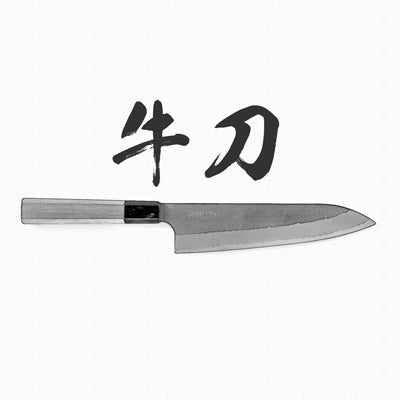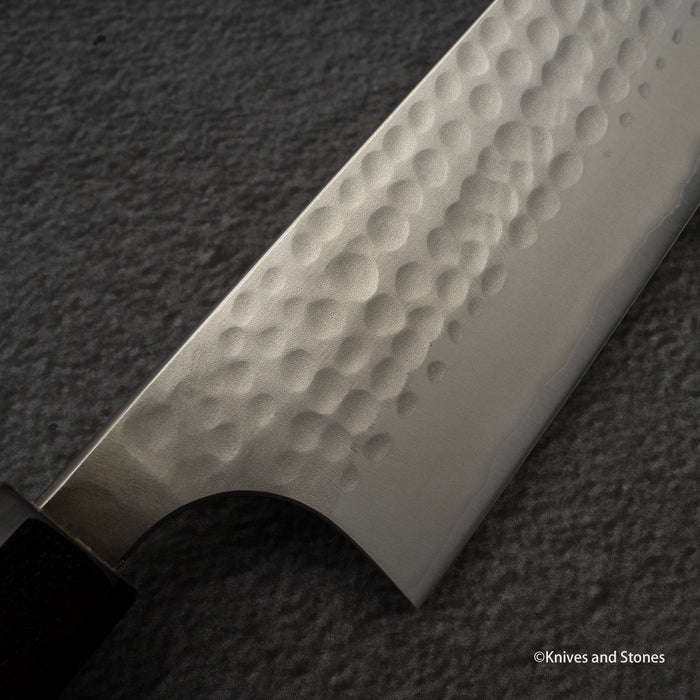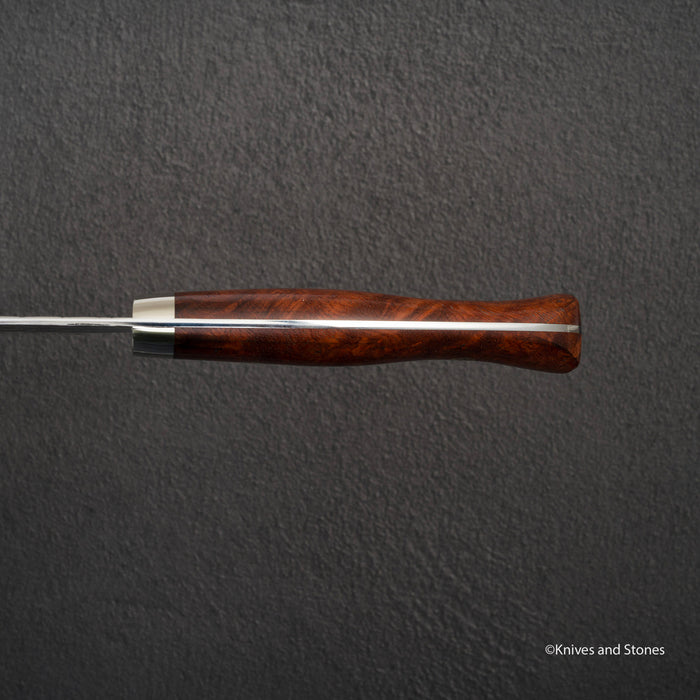Takeshi Saji | 庫存單位:
TS-SRS13-GY240-GRNTQS
Takeshi Saji SRS13 Gyuto 240mm 西洋綠松石配 Saya
售價
$12,415.00
正常價格
$14,606.00
單價
/
不可用
Takeshi Saji SRS13 Gyuto 240mm 西洋綠松石配 Saya 已缺貨,一旦有貨就會出貨。
無法載入取貨日期
Detailed Specifications
| Line | 佐治武士 SRS-13 西式 |
| Profile | 牛刀 / 主廚刀 |
| Bevel Type | 雙斜面 |
| Weight | 323 g | 11.4 oz |
| Edge Length | 240 mm | 9 29/64″ |
| Heel Height | 51 mm | 2 1/64″ |
| Width @ Spine | 2.1 mm | 5/64″ |
| Width @ Mid | 2.2 mm | 3/32″ |
| Width @ 1cm from Tip | 0.6 mm | 1/32″ |
| Steel | SRS-13 | Powdered | 不鏽鋼 |
| Blade Construction | 三枚 - 不鏽鋼夾層 |
| Hardness (HRC) | 63 - 64 |
| Surface Finish | 槌目 |
| Handle | 可樂瓶型西式柄 |
| Region | 武生 |
| Best for |
|

| Pros | Cons |
|
|
|
Care Instruction
- Don't cut hard things! Japanese knives are brittle so bone hacking is a NO NO!
- Wash with neutral detergent after use, and wipe dry;
- Please don't wash knife with dishwasher, it will damage the wood handle;
- Be careful not to leave the knife close to a heat source for a long time;
- It is a lot more dangerous to cut with a blunt knife than a sharp knife!
- It is best to sharpen a Japanese knife regularly on a waterstone. Error: Steel nature unknown



























